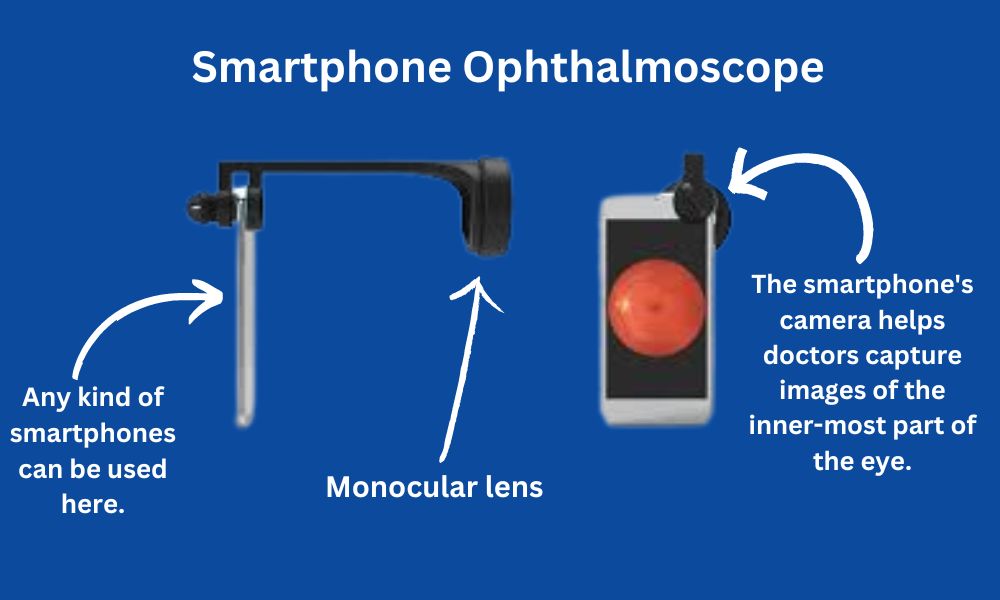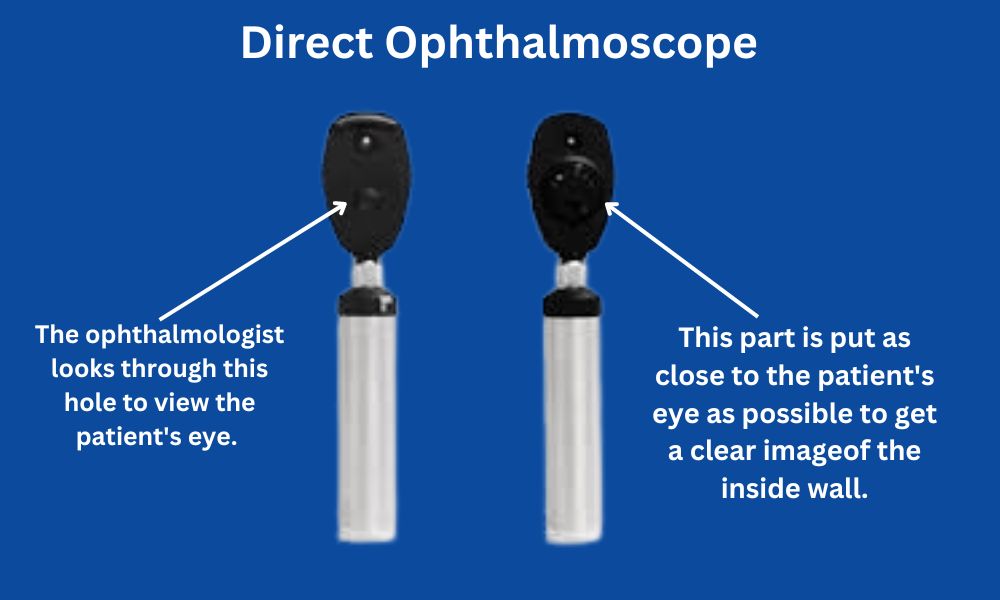Studies show that smartphone ophthalmoscopes are easier to handle and are cost-efficient too.
Despite being the cheaper and easier version of ophthalmoscopes, smartphone ophthalmoscopes are still overlooked by many ophthalmologists. Most ophthalmologists say that they prefer using direct ophthalmoscopes while treating patients.
One such ophthalmologist who does not use a smartphone ophthalmoscope is Dr. Rachana Shivaram, a consultant ophthalmologist in Bengaluru. She prefers using a direct ophthalmoscope. “I do not think that there are many smartphone-based ophthalmoscopes in use today. I believe they are rarely used by ophthalmologists in India,” she said.
An ophthalmoscope is a device that is used to inspect the interior part of an eyeball. It is used by ophthalmologists (eye doctors) during almost every eye test. It contains a strong light which is directed into the eye with the help of a small mirror or prism. This device enables the ophthalmologist to see magnified images of the back of the eye, which contains the optic disk, retina, retinal blood vessels, macula, and choroid.
Dr. Rachana explains how a direct ophthalmoscope works. She said that it works when a ray of light is sent through the pupil which is then viewed through a monocular. She said, “This way you can have a focused look at the retina. We call this the fundus, where you should be able to visualise the optic disk as well as the central part of the eye, which is called the macula.”
On the other hand, a smartphone ophthalmoscope is a smartphone which has a simple optical adapter attached to it. It works on the same principles as a direct ophthalmoscope, with just one major difference. The smartphone part of the device helps in capturing images of the inside of eye with ease. It is also much cheaper than a direct ophthalmoscope.

Dr. Praneeth V, a Hyderabad-based ophthalmologist who owns a clinic called Neovision, agrees that smartphone ophthalmoscopes are better. “I have been using a smartphone ophthalmoscope for the past three years now. It has certainly made my life easier.” He added that it helps his patients understand what is going on in their eye much better.
A 2018 study published in the American Academy of Ophthalmology states that using smartphone ophthalmoscopes would be better. It says that smartphone ophthalmoscopes are “a high-tech, low-cost imaging alternative.” The technique is easier to learn as compared to the technique needed to operate a direct ophthalmoscope.
Dr. Praneeth agrees that there a lot of advantages to using a smartphone ophthalmoscope. One of the advantages is that you can zoom in and out, he said. Two, you can take pictures easily and can mark the pictures for any abnormalities using the smartphone. “This will help in making the patient understand what is wrong. These things are not possible using a direct ophthalmoscope,” he added.
There are disadvantages to using a smartphone ophthalmoscope too, argues Dr. Rachana. “The disadvantage is that the clarity is a little less as compared to viewing something directly,” she said. “No matter how good it is, it cannot be better than having an ophthalmologist look directly into your eye without the barrier of a smartphone.” She added that it can maybe be used as a screening tool, but it cannot be confirmed as a diagnostic tool.
Counteracting what Dr. Rachana said, Dr. Praneeth said that not having the barrier of a smartphone is not always good. “There is a gap of just a few millimetres that exists between the doctor’s eye and the patient’s eye while using a direct ophthalmoscope.” On the other hand, the smartphone part of the smartphone ophthalmoscope acts like a shield. He said that it creates a barrier between the doctor and the patient which was very essential during the pandemic. He added, “This is why I stopped using a direct ophthalmoscope after the onset of the pandemic.”

“One thing is that you have to go really close using a direct ophthalmoscope, the other thing is that it is a cumbersome process,” continued Dr. Praneeth. When that was the only option, it was what they would use. “But now that there is an easier version which is just as efficient, I would prefer using a smartphone ophthalmoscope,” he added.
Dr. Shailaja, an ophthalmologist who is practicing and teaching ophthalmology for the past 20 years has mixed views on the topic. “Personally, as an ophthalmologist I would prefer a direct ophthalmoscope. But for general doctors who are not ophthalmologists or for lab technicians or paramedics, I think using a smartphone ophthalmoscope would be better.” She said that it would be a good tool to use while teaching ophthalmology too.
A study published in July 2022 proved that medical students find it easier to learn when they were taught using a smartphone ophthalmoscope. It saved them time and they were able to get results almost as accurate as the results from a direct ophthalmoscope.
“Using a normal ophthalmoscope takes a lot of practice and there is a big learning curve,” said Dr. Shailaja. So, using a smartphone ophthalmoscope is easier, anyone with minimal training can do it. She added that if you know how to operate a smartphone, which almost everyone does, you can easily operate a smartphone ophthalmoscope. “This can be very useful in many situations.”
“For example, most of the time the ophthalmologists in rural areas do not have the capacity to diagnose a complex issue,” she said. At times like this, they can take pictures easily using a smartphone ophthalmoscope and send it to doctors in the city that will diagnose the problem.
Dr. Shailaja thinks that this is something that needs more work. She said that the only complaint she heard about a smartphone ophthalmoscope is that it does not have the best clarity. “If it is developed more and is able give us better clarity, then I would start using it. Then it would have a big impact.”
A study published in the National Library of Medicine concludes that smartphone ophthalmoscopes do have a place in ophthalmology. It states that they do have “a practical role for preliminary or screening or learning purposes.” But its role in routine ophthalmic practices is not yet clear.




